This “Limited Edition” Blu-ray from Radiance Films is currently available for purchase.
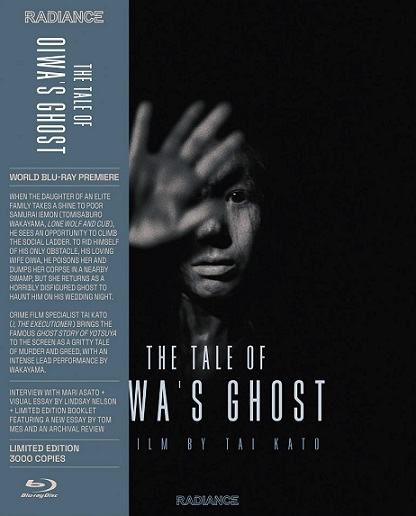
I’ll admit that when I initially read up basic information about the general plot of The Tale of Oiwa’s Ghost, it sounded very familiar. So much so, that I initially thought it may have been a re-release or part of a set that I had already reviewed. But after putting it on, I realized it wasn’t a reissue and that there was a reason for my confusion with the brief plot synopsis.
The story is based on Yotsuya Kaidan, one of the most famous Japanese ghost stories of all time. Written 200 years ago, the tale is so popular that there have been dozens of adaptations on stage and screen, including one that I have seen and reviewed on Blu-ray (1959’s The Ghost of Yotsuya from the Daiei Gothic: Japanese Ghost Stories box set that was released last year).
The Tale of Oiwa’s Ghost aka The Ghost Story of Oiwa’s Spirit was made in 1961 and is considered another one of strongest film adaptations of the story. Indeed, this black-and-white, widescreen title is impressively shot, well-acted, and it includes some eerie visuals that help the film stand above many other versions. Since I have only seen a few takes on the story, I’m not knowledgeable to determine whether it is the best one, but it certainly is among the most impressive and in many respects equals and/or improves upon the 1959 edition.
Radiance Films have done an excellent job bringing this title to Blu-ray. The high-definition digital transfer is super, resulting in a clean and impressive picture with very solid black levels and no pixelation or distortion. There are some wonderful dimly lit shots in the movie that really shine thanks to this transfer, as well as a couple of enlightening extras that make this a recommended release for Japanese cinema enthusiasts.
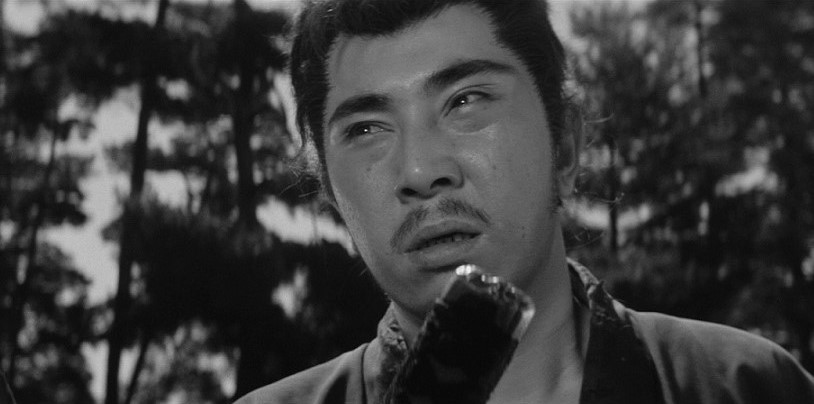
The story follows a desperate samurai Lemon Tamiya (Tomisaburô Wakayama) who is on the outs with his wife Oiwa (Ayuko Fujishiro) following a confrontation that resulted in the slaying of another man. After bumping into an aristocratic young woman in a market, the lead impresses her with an act of kindness. But he sees it as an opportunity, as becoming husband to the wealthy and pretty young woman would allow him to climb up the social ladder. For him, the only obstacle in accomplishing his goal is his wife. The greedy man and his pals concoct a scheme to cause her death using a harmful ointment. It goes to plan, with the cream ultimately cousin a horrific disfigurement and the woman’s suicide. When she passes, he assumes all is well. That is, until her spirit returns, attacking and taking revenge on those who caused her passing.
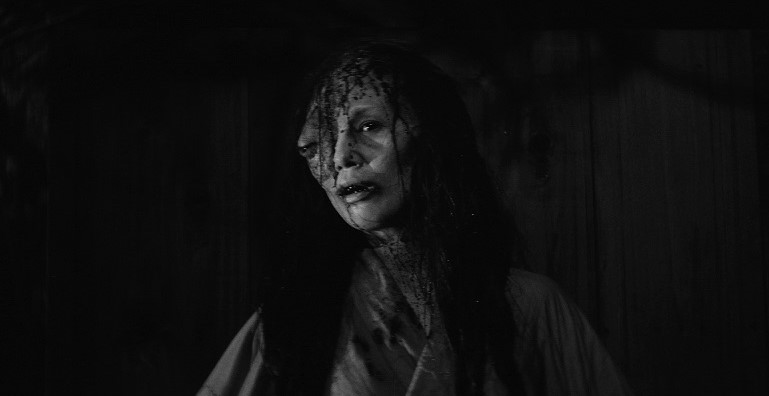
The acting is exceptionally good in this effort, with director Tai Katô (who served as second unit director on Akira Kurosawa’s Rashomon, as well as several action titles) abandoning the usual fast-cutting shocks for unsettling and effective long takes. The characters interact and get into confrontations over these extended set-ups and the framing frequently uses low-angles (those used for the swamp scenes are very striking) that create a foreboding atmosphere. Additionally, when the leads are indoors, there are a great deal of backgrounds with bars and lines that add a sense of claustrophobia.
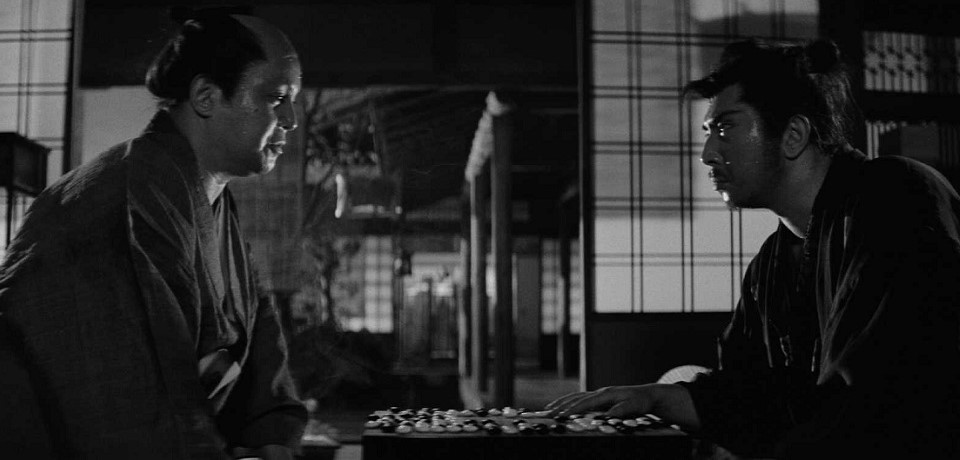
Towards the final act, when the ghost begins pursuing her victims, viewers are treated to more great images. One includes the spirit attached to a door that rises out of the swamps and spins around. Additionally, a bold sequence involving the woman’s hand coming out of a washing bin and grasping at others really makes an impression. As mentioned, the sight of a pale hand rising out of a dimly lit bucket is memorable.
This is a well-paced and compelling told effort that manages to add enough unique angles and ideas to stand out among its peers.
And, the bonuses are equally impressive. There is an intro to the film with movie expert Mari Asato, who gives viewers a brief primer on what to look out for from this adaptation. She also appears in an interview in the bonus material. After mentioning that the tale is so famous that most viewers typically watch these films just to see how each director handles the scarring on Oiwa and the climactic shock moments, she looks at how Katô sets up the film’s big jolts.

The authority makes mention that this story is actually a spin-off of the famous 47 Ronin tale. Lemon Tamiya is a character who wasn’t able to serve with the heroes of that story and fight for his leader, and thus it’s important to note how, as a result, his life seems to be spiraling downward and he becomes increasingly overtaken by selfish pursuits.
She discusses a few unique touches that the director brought to the film. Noting that he was primarily an action film director, she points out how he took a different approach to this ghost story. She also mentions that some of the characters have been slightly altered in this retelling. While the overall tone may be a little meaner in the 1959 version, one nasty character is made more likable in this version. The speaker notes that she likes all films based on this subject, and the discussion implies that she has a fondness for this one because of its interesting variations from the norm.
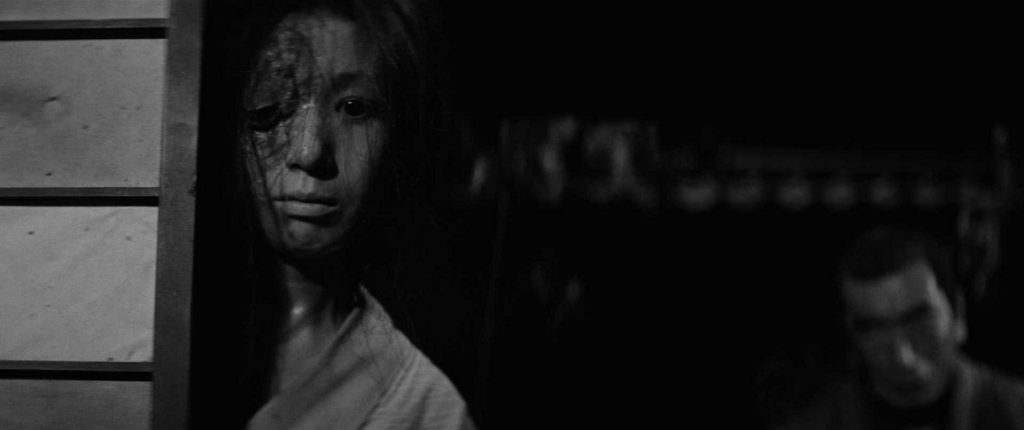
In addition, there is a visual essay that compares several major moments from different films about the story. At times, viewers see three or four different versions of the same shock play next to each other. There is some text to give a bit of set-up and it is interesting and fun to watch, although I wish it had also included the names and years of the titles being shown on screen as they appear.
As with most Radiance Films titles, this is a “Limited Edition” that also comes with a booklet featuring a new essay on the movie and an archival review.
If you enjoy the Yotsuya Kaidan story, then The Tale of Oiwa’s Ghost is another Blu-ray worth adding to your collection. It’s another technically impressive and engaging retelling of the famous chiller that will please genre fans. The Blu-ray boasts an image better than any previously released in this part of the world and the entire package is certainly worth checking out.


